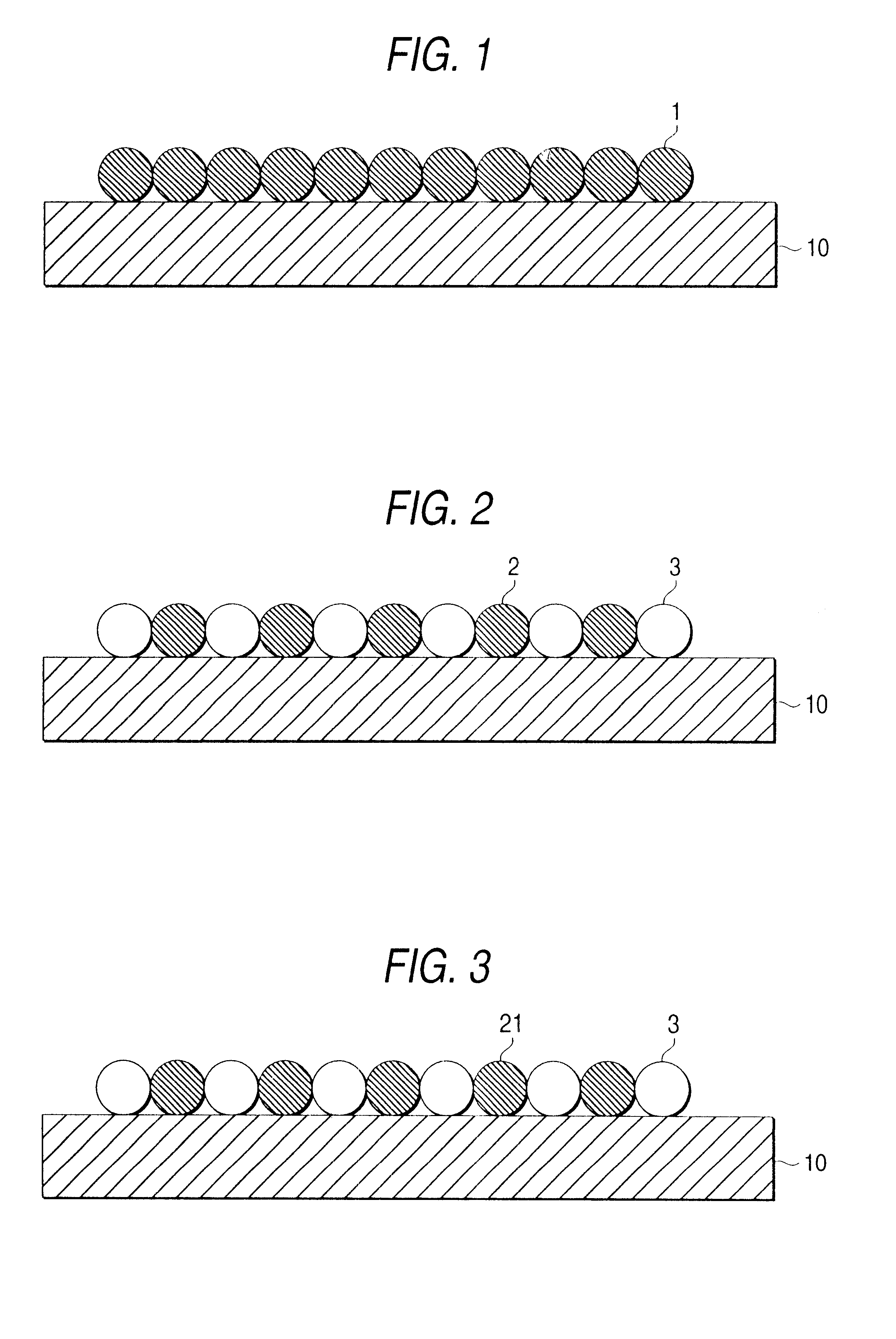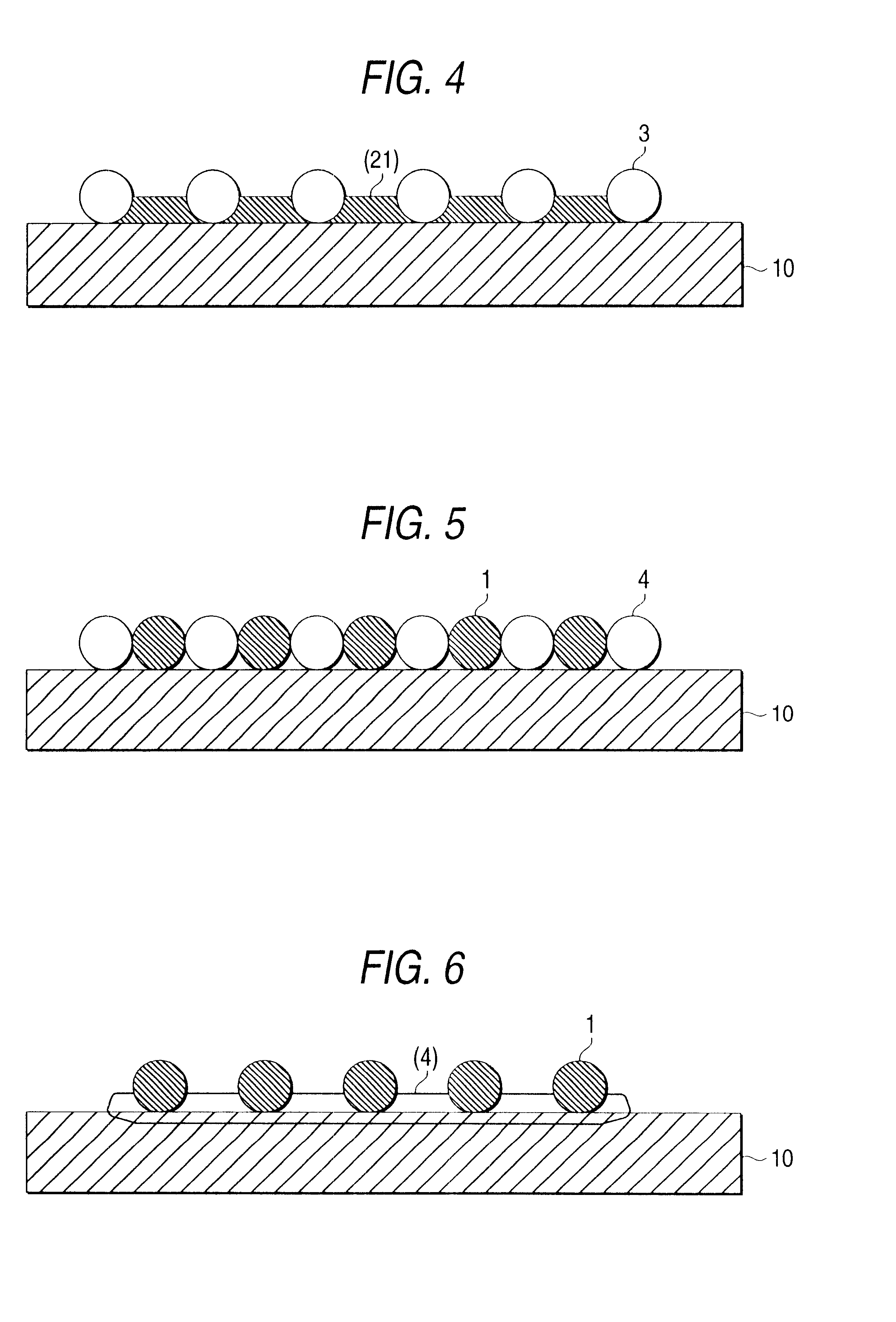Rubber-erasable aqueous ink for writing material composition and writing materials using the same
a writing material and aqueous ink technology, applied in the direction of inks, coatings, organic dyes, etc., can solve the problems of paper splattering, finely divided colorant particles pricking into paper, and paper is trapped by paper
- Summary
- Abstract
- Description
- Claims
- Application Information
AI Technical Summary
Benefits of technology
Problems solved by technology
Method used
Image
Examples
example 1
Preparation of Dispersion of Particulate Adhesive Colored Resin
Into a 2-literiter separable flask were charged 480.0 parts of water in which 20.0 parts of a polyvinyl alcohol [Gosenol GL-03, produced by The Nippon Synthetic Chemical Industry Co., Ltd.] were then dissolved to make a dispersant.
To the foregoing dispersant was then added a coloring composition consisting of 8.0 parts of carbon black (Printex L, produced by Degussa-Huls Japan Co., Ltd.), 46.0 parts of butyl acrylate, 46.0 parts of styrene and 2.0 parts of 2,2'-azobisisobutyronitrile. The mixture was then stirred at a high speed to make droplets having a particle diameter of about 7 .mu.m. Stirring continued for 6 hours during which the reaction mixture was subjected to suspension polymerization at a temperature of 60.degree. C.
The reaction solution was then allowed to cool to room temperature. In order to remove the polyvinyl alcohol from the dispersant, the reaction solution was washed with 600.0 parts of water, and th...
example 2
Preparation of Dispersion of Particulate Adhesive Colored Resin
Into a 2-liter separable flask were charged 475.0 parts of water in which-25.0 parts of a polyvinyl alcohol [Gosenol GL-03, produced by The Nippon Synthetic Chemical Industry Co., Ltd.] were then dissolved to make a dispersant.
To the foregoing dispersant was then added a coloring composition consisting of 11 parts of a red organic pigment (CINQUASIA Scarlet RT-787-D, produced by Ciba Geigy Inc.), 80.1 parts of butyl acrylate, 3.6 parts of methyl methacrylate, 5.3 parts of ethylene glycol dimethacrylate and 2.0 parts of t-butyl peroxy pivalate. The mixture was then stirred at a high speed to make droplets having a particle diameter of about 5 .mu.m. Stirring continued for 6 hours during which the reaction mixture was subjected to suspension polymerization at a temperature of 60.degree. C.
The reaction solution was then allowed to cool to room temperature. The reaction solution was thoroughly washed in the same manner as in...
example 3
Preparation of Dispersion of Particulate Adhesive Colored Resin
Into a 2-liter separable flask were charged 485.0 parts of water in which 15.0 parts of methyl cellulose [Metrose 90SH-100, produced by Shin-Etsu Chemical Co., Ltd.] were then dissolved to make a dispersant.
To the foregoing dispersant was then added a coloring composition consisting of 10.0 parts of carbon black (Printex L, produced by Degussa-Huls Japan Co., Ltd.), 81.0 parts of butyl acrylate, 5.4 parts of methyl methacrylate, 3.6 parts of ethylene glycol dimethacrylate and 2.0 parts of 2,2'-azobisisobutyronitrile. The mixture was then stirred at a high speed to make droplets having a particle diameter of about 5 .mu.m. Stirring continued for 6 hours during which the reaction mixture was subjected to suspension polymerization at a temperature of 60.degree. C.
The reaction solution was then allowed to cool to room temperature. The reaction solution was thoroughly washed in the same manner as in Example 1, and then subjec...
PUM
| Property | Measurement | Unit |
|---|---|---|
| viscosity | aaaaa | aaaaa |
| particle diameter | aaaaa | aaaaa |
| glass transition temperature | aaaaa | aaaaa |
Abstract
Description
Claims
Application Information
 Login to View More
Login to View More - R&D
- Intellectual Property
- Life Sciences
- Materials
- Tech Scout
- Unparalleled Data Quality
- Higher Quality Content
- 60% Fewer Hallucinations
Browse by: Latest US Patents, China's latest patents, Technical Efficacy Thesaurus, Application Domain, Technology Topic, Popular Technical Reports.
© 2025 PatSnap. All rights reserved.Legal|Privacy policy|Modern Slavery Act Transparency Statement|Sitemap|About US| Contact US: help@patsnap.com


